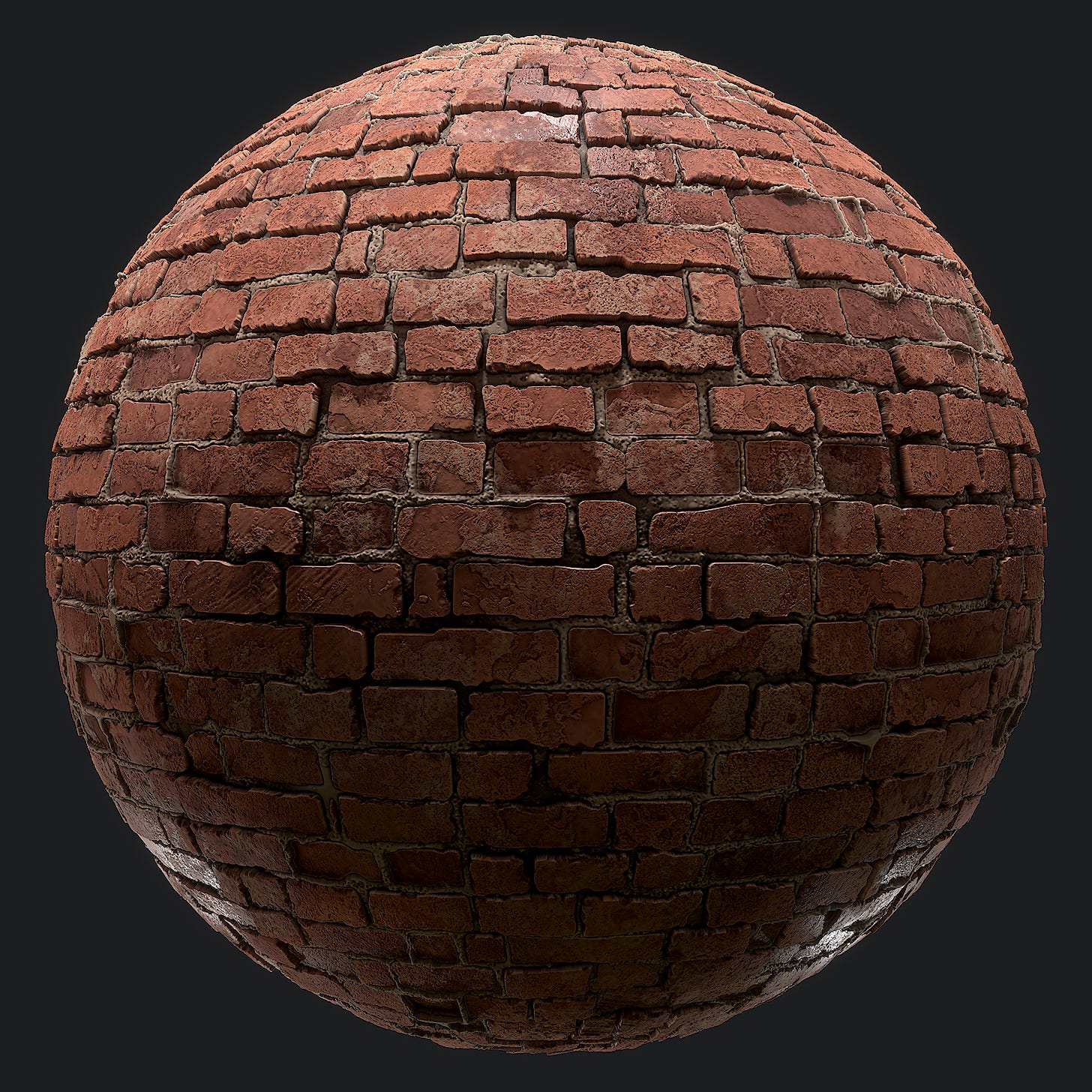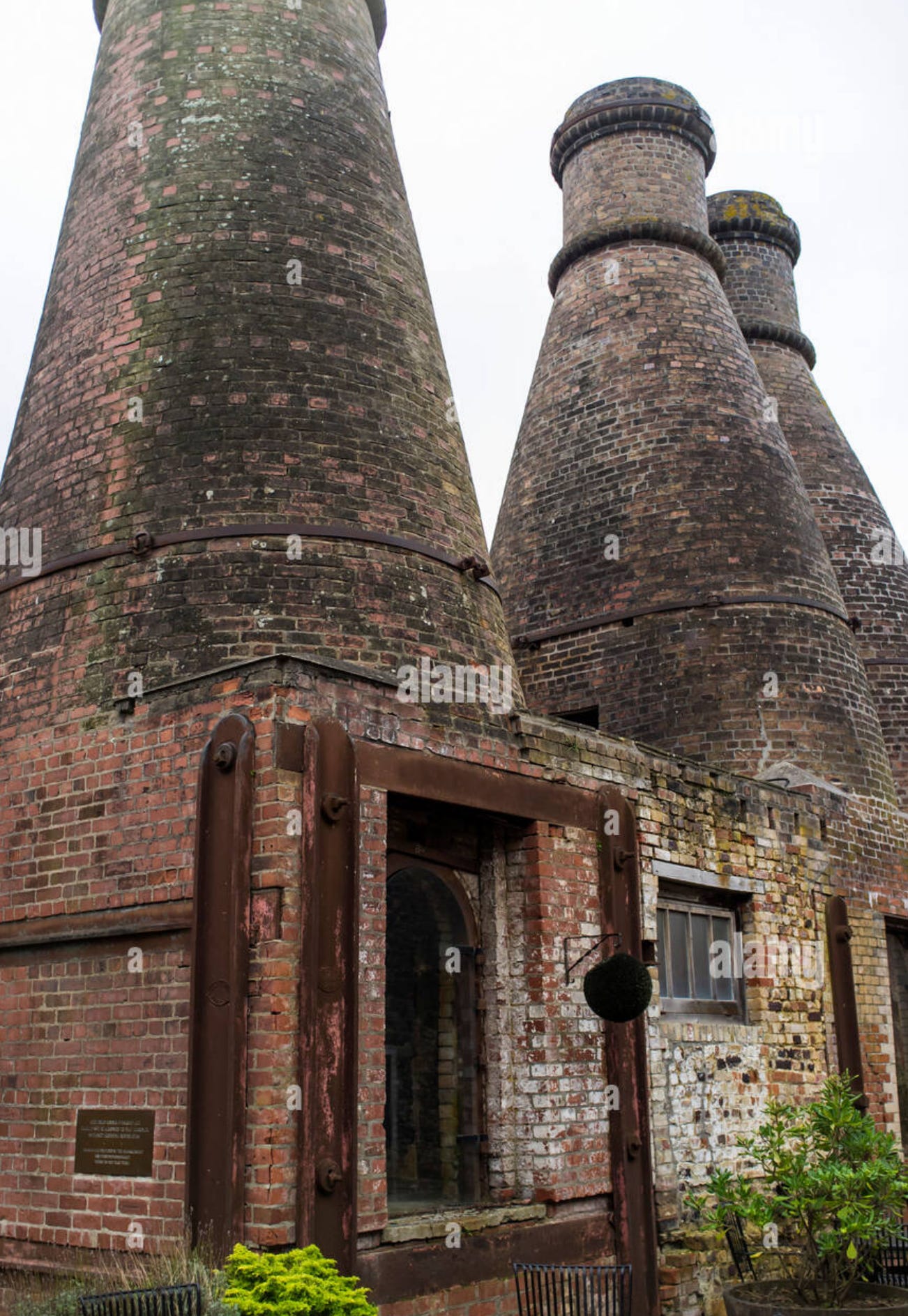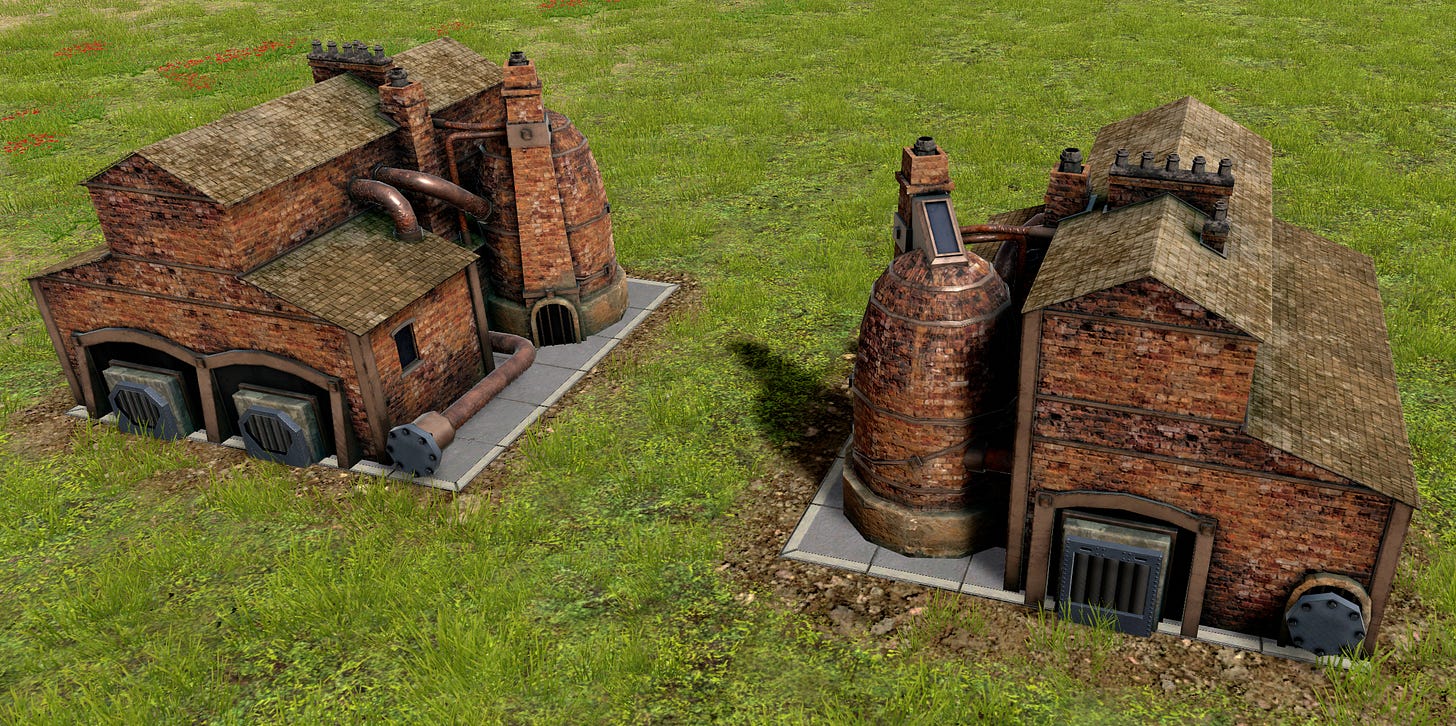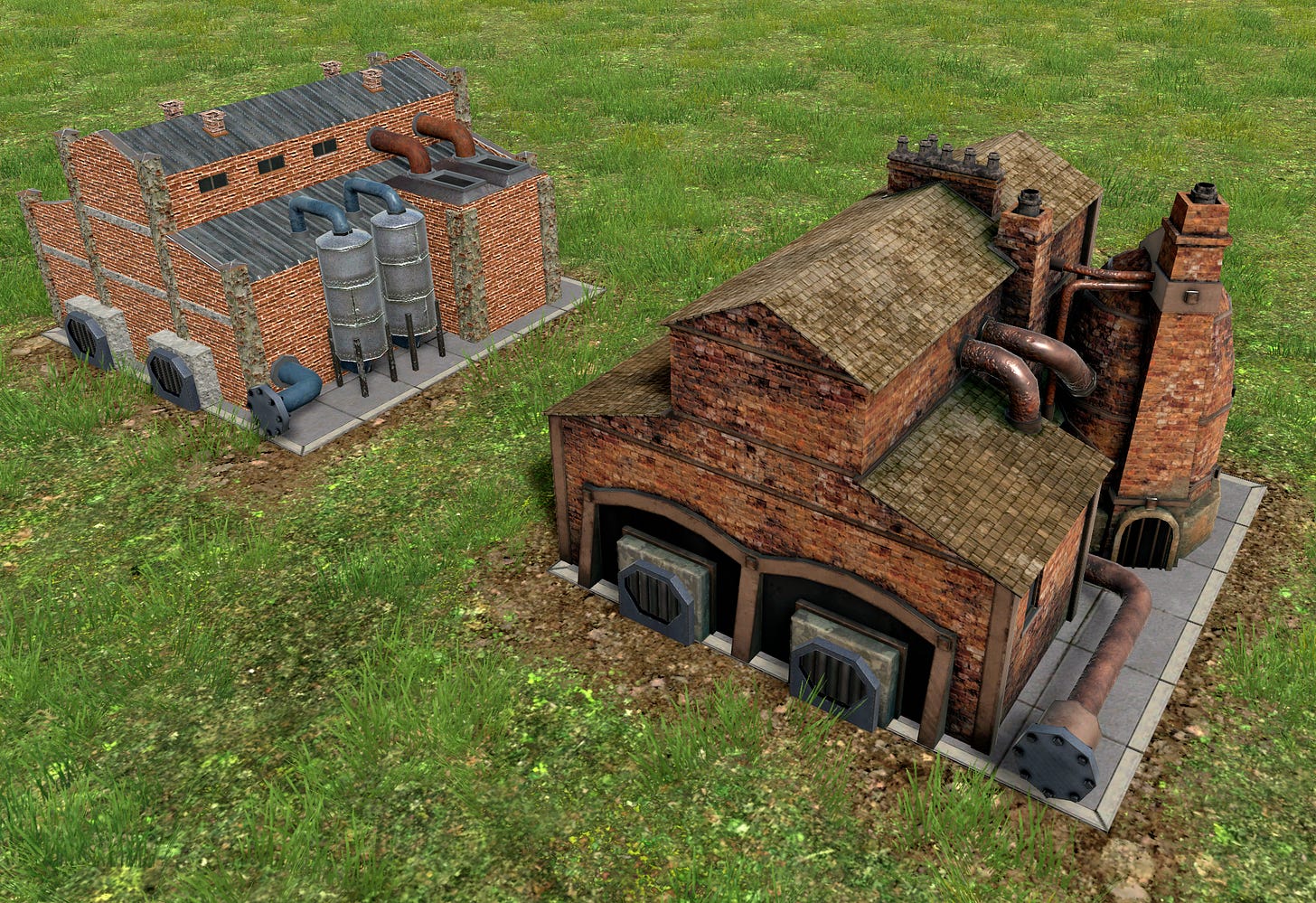My progress continues as I journey into this new world of mods to improve on the art of Captain of Industry. This week I’ll be getting deep into materials, textures, and integration of the final asset. I really enjoy this part of the process of 3D asset creation. It’s when you go from design and gray model to fully colored and texture objects that start to come to life.
Materials and textures
There’s a lot of other technical steps before we get to materials and textures…like UVs, Texture planning, Trim Sheets, Texel Density, Baking, Texture Sets, etc… I can go on. For now I’ll skip that and save that for another post if there are those of you who are interesting in hearing more about that process.
I knew I wanted the brick to be the focus of this building. This was the first thing that drew me to the building in the first place while pulling references for the design. the brick would become a big part of the visual appeal of this building for me, so I spent some time in Substance Designer to create the brick texture.
That height map always seem to make it all pretty looking doesn’t it? It just makes it pop out just that much more (literally!) Usually a height map like this is reserved for showcase renders like the above, however, when it goes in game, we’ll probably only be able to get away with a Normal map due to performance restrictions. Ahhh the joy of game dev. This is what I miss most about working in feature film and animation. Since everything is pre-rendered, all you really have to worry about is making it look good. There was no performance and optimization pass needed like we do in games. But on the flip, this is also one of the things that drew me to games in the first place. Designing and creating art under constraints sometimes allows you to think outside the box and come up with creative solutions to the same problem.
You can inject a lot of story and history through textures. Even though this is a static object and image, if we take a close look to observe, we’ll begin to notice there’s a lot more going on there. I tried to re-tell some of that story from the reference through my weathering and where I painted certain details. For example, the roof has a 2-tone color and saturation, which plays into the idea of how the roof has been sun bleached damaged and stained from the rain. Or the buildup of soot in the chimney stacks from all of the fire. Or the rusting of the pipes at the connectors because of the buildup of use over time. I mean just look at that reference image above there of an old Kiln and you can see how much character and history just the bricks give off.
Integration in-game
There was a lot more technical hurdles than I expected to get through when it came down to integrating it into the engine. Luckily the documentation on modding and their discord community was very helpful in answering a lot of my questions.
Some Github repos, command line building, and a Unity material later… here’s the final asset in-game, painted up in all its glory! It’s come a long way since the grayscale model. I think it came out pretty descent. There’s still a lot of room for improvement here, but for now I’m calling it done!
Comparison of the current in game asset vs my updated (and hopefully better looking) asset.
Learnings
I learned a lot from going through this whole process of modding a game. I can see why people like to do it so much. There were a lot of challenges and hiccups along the way but overall its a worthwhile struggle to stick with a project that you feel strongly for and see it through to the end. Sometimes when you’re in the thick of it, its easy to lose site of where you want to go. In the end, I think seeing your progress will help you see just how much you’ve grown because of that journey. Overall it was a fun exercise to go from zero to finish. I encourage others to try and mod games. It was something new to me and I wasn’t sure if I would be able to do it.
Its such a nod and honestly its the sincerest form of flattery to the developers for members of their game community to take the time and energy to modify a game they already spend hours and hours playing.





